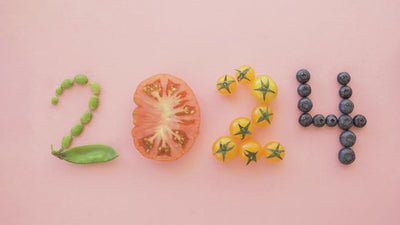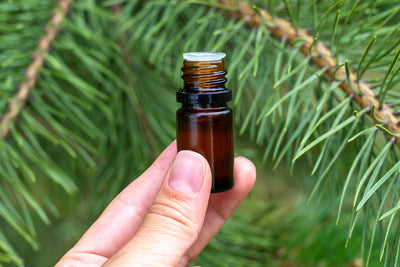From Farm-to-Sip: The Creation of Chamomile 🌼
Ever wondered what it takes to bring that soothing cup of chamomile tea to your table? 
Chamomile farming is a blend of art and science, combining a bit of patience with a whole lot of care. Whether you’re a seasoned farmer or just someone with a patch of land and a dream, growing chamomile can be a rewarding experience.
Let’s take a fun, step-by-step journey through the process of farming chamomile - from planting the seeds to enjoying a freshly brewed cup of tea.
Step 1: Choosing The Chamomile 🌼
Before farmers even touch the soil, they must decide which type of chamomile they want to grow. There are two main varieties:
-
German Chamomile (Matricaria recutita): This is the type most commonly used for tea. It’s an annual, meaning it completes its life cycle in one year. German chamomile grows tall and produces a lot of flowers—perfect for harvesting.
-
Roman Chamomile (Chamaemelum nobile): A perennial plant that returns year after year. It grows lower to the ground and is often used as a fragrant ground cover or for making essential oils.
Most farmers go for German chamomile if they’re focusing on tea production because of its higher yield of flowers.
Step 2: Prepping the Soil 🚜
Chamomile is a laid-back plant, but it thrives best in well-drained, sandy or loamy soil with a slightly acidic to neutral pH (around 5.6 to 7.5). Here’s how farmers get the soil ready:
-
Pick the Perfect Spot: Chamomile loves sunshine, so farmers choose a location that gets at least 6 hours of direct sunlight each day.
-
Tilling the Soil: Farmers loosen the top few inches of soil with a tiller or garden fork. This helps roots penetrate the ground more easily and ensures good drainage.
-
Adding Compost: While chamomile doesn’t need a super-rich soil, a little compost can help improve soil texture and provide just enough nutrients for healthy growth.

Step 3: Planting the Seeds 🌱
Now it’s time to plant! Chamomile seeds are tiny, so farmers need to be gentle:
-
Timing: Farmers plant chamomile in early spring after the last frost. They might start seeds indoors a few weeks before the last frost and transplant them outside, or they might direct sow them in the field.
-
Sowing: Seeds are scattered lightly over the soil surface. Because they need light to germinate, farmers don’t bury them deeply—just a light dusting of soil on top.
-
Watering: A gentle watering ensures the seeds settle into the soil without being washed away.
Step 4: Nurturing the Plants 💛
Chamomile is a pretty low-maintenance crop, but farmers still need to give it some TLC:
-
Watering: Chamomile prefers consistent, moderate watering. Farmers make sure the soil stays moist but not soggy, especially during germination and early growth.
-
Weeding: Farmers keep the area around the chamomile plants weed-free, as weeds can compete for nutrients and sunlight. A layer of mulch can help suppress weeds and retain soil moisture.
-
Pest Control: Chamomile is generally pest-resistant, but farmers keep an eye out for aphids or other pests. If needed, they use organic methods like neem oil to keep the plants healthy.
Step 5: Harvesting the Flowers 👩🌾
After a few weeks of growth, chamomile starts to bloom—and that’s when the magic happens. 
-
Timing: Farmers harvest chamomile flowers when they’re fully open but before the white petals begin to droop. This is when the flowers have the highest concentration of essential oils and beneficial compounds.
-
Method: Harvesting is usually done by hand. Farmers gently pinch off the flowers or use small shears. This is a delicate process because the flowers are small and easily damaged.
-
Frequency: Chamomile is a prolific bloomer. Farmers may harvest flowers every 7-10 days throughout the growing season to ensure a steady supply.
Step 6: Drying and Processing 💨
Freshly harvested chamomile flowers are fragrant and full of potential, but they need to be dried properly to preserve their quality:
-
Drying: Farmers spread the flowers out on drying racks in a well-ventilated, shaded area. It’s important to dry them away from direct sunlight to prevent the loss of essential oils. The drying process usually takes about a week.
-
Storing: Once dried, the flowers are stored in airtight containers in a cool, dark place to maintain their flavour and potency.
Step 7: From Farm to Fork (Or Cup!) 🍵
With the flowers dried and ready, the final step is getting that chamomile to you:
-
Tea Production: The dried chamomile is either sold directly as loose-leaf tea or processed into tea bags. Some farmers may also sell the flowers to companies that use them in herbal blends or cosmetics.
-
Enjoying the Fruits of Labor: Whether you buy it from a local farm or grow it yourself, the ultimate reward is a soothing cup of chamomile tea. Simply steep a tablespoon of dried flowers in hot water, and enjoy the fruits of a farmer’s hard work!
The Sweet Satisfaction of Chamomile Farming
Chamomile farming is more than just growing a crop—it’s about nurturing a plant that has been cherished for centuries for its calming properties
So next time you enjoy a cup of chamomile tea, take a moment to think about the farmer who carefully planted, nurtured, and harvested those tiny flowers just for you. Cheers to that!




